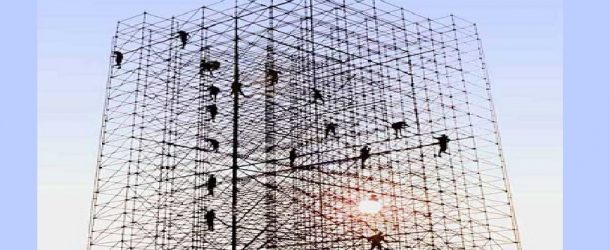There is a strong relationship between nation-building process and identity formation. The dynamic link between nation-builders (elites) and the way national identity is shaped can be analyzed within the framework of some main theoretical arguments. The purpose of this essay is to shed light upon the dynamic relationship between nation-building process and national identity construction. Hence, first the relevant concepts will be defined then the theoretical studies will be mentioned.
Identity can be defined in a double sense. It refers to both social categories and to the resources of an individual’s self-respect or dignity. In ordinary language at least, we can use “identity” to refer to personal characteristics or attributes that cannot naturally be expressed in terms of a social category.
The nation-building process can be defined as the process whereby elites attempt to overlap political and national units. To achieve this overlap, the elites construct and impose a common national identity on the masses. Therefore, construction of a national identity can be regarded as one of the major dimensions of nation-building. It is important to note that, in principle, all nation-building processes can be viewed as cultural interventions as the center (elites) establishes a particular identity on the periphery (masses) in other words, the elites establish a national identity for the rest of the population (Utz, 2005).
In understanding how national identities are constructed, a brief overview concerning identity and its relation to ‘others’ is necessary. Here, Chantal Mouffe’s study on identity formation is significant. Mouffe argues that the constitution of an identity is generally based on exclusion and on establishing a violent hierarchy between the resultant two poles. This neatly illustrates that any social-objectivity is constituted through acts of power and needs to show traces of exclusion (Mouffe, 1993).
As noted, nation-building can be defined as the sum of societal, cultural, and political processes which bring about a collective identity among the population in a given polity. Indeed, the creation of a particular collective identity needs the identification of a sharp distinction between ‘us’ and ‘them’. As Dominique Schnapper puts it: “Collective attachments are always affirmed in opposition to others…” (quoted in Abizadeh, 2005). In this sense, it should be noted that, the formation of national identity is related to the decision to choose a common enemy. The national identity can be defined by highlighting its inner and outer boundaries or its others. Stuart Hall (1996) explains that “it is only through the relation to the Other, the relation to what it is not, to precisely what it lacks, to what has been called its constitutive outside, that the ‘positive’ meaning of any term—and thus its identity—can be constructed.”
In explaining the role of the ‘others’ in building identities, Seyla Benhabib (1996) writes: Since every search for identity includes differentiating oneself from what one is not, identity politics is always and necessarily a politics of the creation of difference. One is a Bosnian Serb to the degree to which one is not a Bosnian Moslem or a Croat; one is a Gush Emmunim settler in the West Bank to the extent that one is not a secular Zionist [. . .]. What is shocking about these developments, is not the inevitable dialectic of identity/difference that they display but rather the atavistic belief that identities can be maintained and secured only by eliminating difference and otherness. The negotiation of identity/difference [. . .] is the political problem facing democracies on a global scale.
Anthony D. Smith describes national identity as “the continuous reproduction and reinterpretation of the pattern of values, symbols, memories, myths and traditions that compose the distinctive heritage of nations, and the identifications of individuals with that pattern and heritage, and with its cultural elements” (Smith, 2001). National identities can be seen as an outcome of social, cultural and political practices. Thus, national identities are never fixed but subject to changes. Similarly, Hobsbawm states that national identity is not always a major component of the set of identifications that constitute the social being; national identification can change with time (Hobsbawm, 1990). National identity formation is a process of fluid, open, and contentious public debate, wherein the lines separating us and them rest on unexamined prejudices, ancient battles, historical injustices, and sheer administrative fiat (Benhabib, 2001). This process shapes the nature of nation-building regime in this particular nation-state.
As concluding remarks, it can be stated that nation-building process requires the exclusion of some other sectors of society in order to create a common identity. In order to construct a “we”, the othering of “them” and stigmatization of the other is a must to legitimize the self. Thus, nation-building elites define a “desired identity” and exclude and treat the identities who don’t hold some particular traits as the “undesired identity”. For example in Turkey, Kurdish identity and non-Muslim identity have been seen as the others of the Republic since the nation-building process.
Begüm BURAK
REFERENCES
- Abizadeh, Arash (2005). “Does Collective Identity Presuppose An Other? On The Alleged Incoherence Of Global Solidarity”. American Political Science Review. No: 99. pp. 45-60.
- Benhabib, Seyla (1996). “The Democratic Movement and the Problem of Difference”, in Benhabib, Seyla (eds.) Democracy and Difference: Contesting the Boundaries of the Political. Princeton, NJ: Princeton University Press. pp. 3-18.
- Benhabib, Seyla (2001). Transformations of citizenship: dilemmas of the nation state in the era of globalization: two lectures. Uitgeverij Van Gorcum.
- Hall, Stuart (1996). “Introduction: Who Needs ‘Identity’?”, in Hall, Stuart & Paul Du Gay (eds.). Questions of Cultural Identity. London: Sage. pp. 1-17.
- Hobsbawm, Eric (1990). Nations and nationalism since 1780: programme, myth, reality. Cambridge: Cambridge University Press.
- Mouffe, Chantal (1993). The Return of the Political. London: Verso.
- Smith, Anthony D. (2001). Nationalism. Theory, Ideology, History. Oxford: Polity Press.
- Utz, Raphael (2005). “Nations, Nation-Building, and Cultural Intervention: A Social Science Perspective”, in A. Von Bogdandy & R. Wolfrum (eds.). Max Planck Yearbook of United Nations Law. Brill N.V. Volume 9, pp. 615-647.



















































